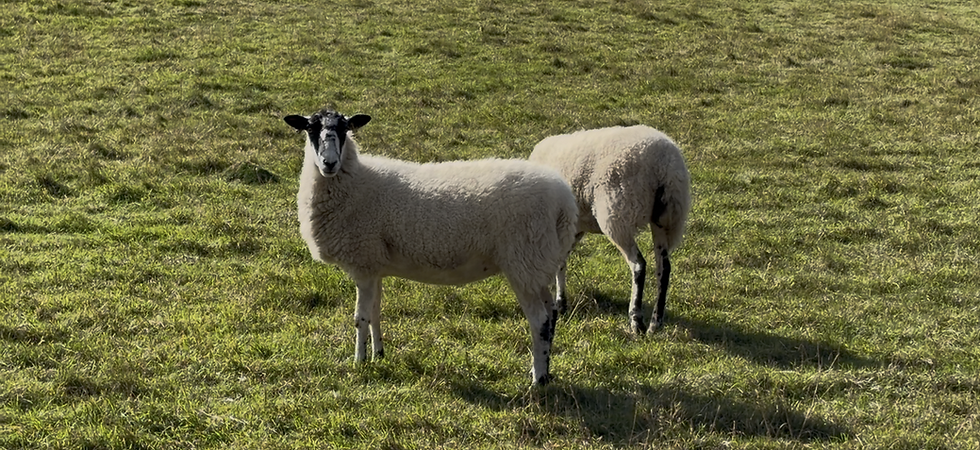LODOBONTINE SEALS
- kradiganscience24
- Oct 11, 2024
- 3 min read
Tavishi
The lodobontine seals are a group of four Antarctic phocids (true seals): the Weddell seal, the leopard seal, the Ross seal, and the crabeater seal. These seals vary greatly in ecological niche, but ultimately share the same basic morphology, being thought to have originated from the elephant seal (hint: not an elephant). Most lodobontine seals are brachycephalic and have lobe-like teeth which facilitate straining of prey; this is particularly evident in the teeth of the crabeater seal. Among the lodobontine seals, my favorite is the Ross seal, but all are rather adorable. The Ross seal is the smallest of the lodobontine seals, and are a rather elusive group of individuals. Very little is known about the Ross seal, but in nearly every photo, they always look like disturbed curmudgeons.
The Ross seal also has very strange twittering vocalizations, the like of which I, unfortunately, have never been able to listen to. However, underwater, Ross seals are also known for whooshing, siren-like calls. From what we do know about Ross seals, ross seals are typically, solitary individuals. Finally, despite the characteristic lobed teeth of the lodobontine seals, Ross seals primarily feed on large fish and squid.
Furthermore, Ross seals are the least abundant of the lodobontine seals, with around 130,000 individuals in the wild today. However, Ross seals are, in no way, threatened species; they seemed to have suffered no genetic bottleneck characteristic of population threats, and rather, remain at a constant population amount.
Next, the crabeater seal. The crabeater seal, in great contrast to the Ross seal, is the most abundant seal in the world, with a population easily upwards of 2 million. While the Ross seal is shy, and doesn't wish to associate with others, the crabeater seal is a gregarious gremlin and social seal; they form small family groups with a mother, father, and pup, which is awfully strange in the pinniped world.
The crabeater seal is falsely called "crabeater". The crabeater seal doesn't ever eat crabs; rather, they stick to the Antarctic krill as their exclusive source of food. They are especially known for the hooked teeth characteristic of the lodobontine seals, as these teeth are what allow them to predate Antarctic krill.
Crabeater seals have often been meals for another member of the lodobontine seals: the leopard seal.
The leopard seal feeds on many mammals, an unusual trait among pinnipeds. They're a carnivorous, predatory group of seals, known for their liking for penguins and crabeater seals. They're a group of solitary seals, except moms and pups, who form social groups.
While most lodobontine seals stay relatively confined to Antarctic pack ice, the leopard seal is very adventurous, having found their way to South African shores.
Leopard seals are also very outspoken about their views. They're known for their strange vocalizations, in addition to their predatory behavior. Vocalizations typically occur among males, with younger males producing more variable calls than older males. Vocalizations below water remind me of a bird or a cricket; it's a trilling sound varying in pitch. Above water, their calls do contain trills, but are more of a hoot or a yelp.
The Weddell seal is the last species of lodobontine seal! What's especially special about the Weddell seal is their strange vocalizations. Now, I've definitely covered the interesting vocalizations of all the lodobontine seals, but what stands out about Weddell seal vocalizations is the extreme variety in calls, and the specificity to an individual. While some seal species have specific sounds unique to them, the Weddell seal contains a great variety of sound types, from a trill, to a chirp, to a call, to extended high pitched screeches. And to make things more interesting, Weddell seals can each have their own individual "songs" specific to themselves.
Another thing that sets Weddell seals apart from the other lodobontine seals is their range: while most frequent pack ice, Weddell seals live upon fast ice. Weddell seals also form small colonial groups, rather than living socially isolated like the elusive, shy Ross seals. And despite their cute, innocent appearance, the Weddell seal has also been found to chow down on seabirds like penguins, and other similar animals.
The lodobontine seals are estimated to make up about 80% of all pinniped biomass in the world, mostly because of the sheer amount of crabeater seals that exist. And although they inhabit the same environments, and have so much overlap, they are all so uniquely distinct among their frigid Antarctic environment.










Comments